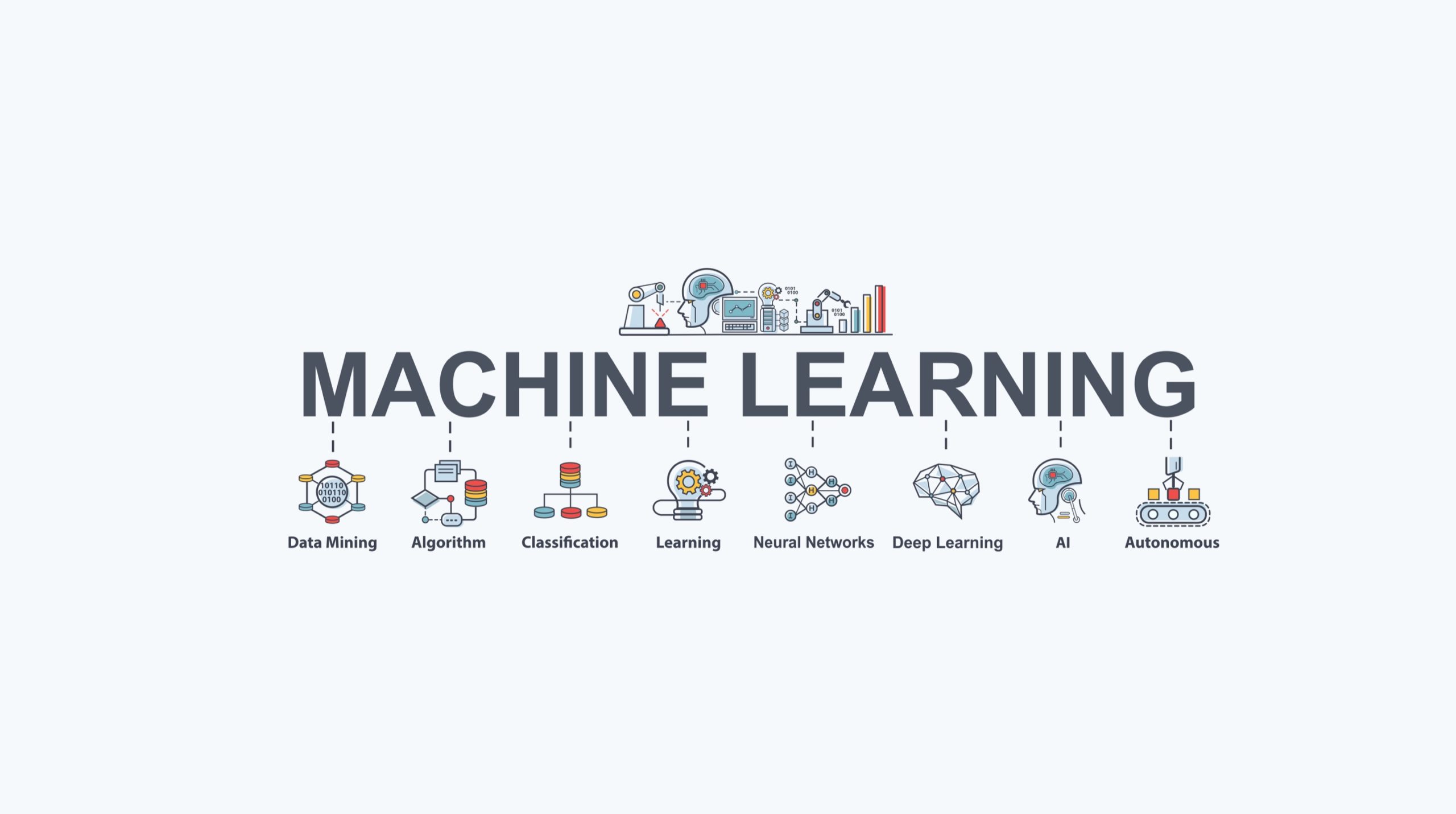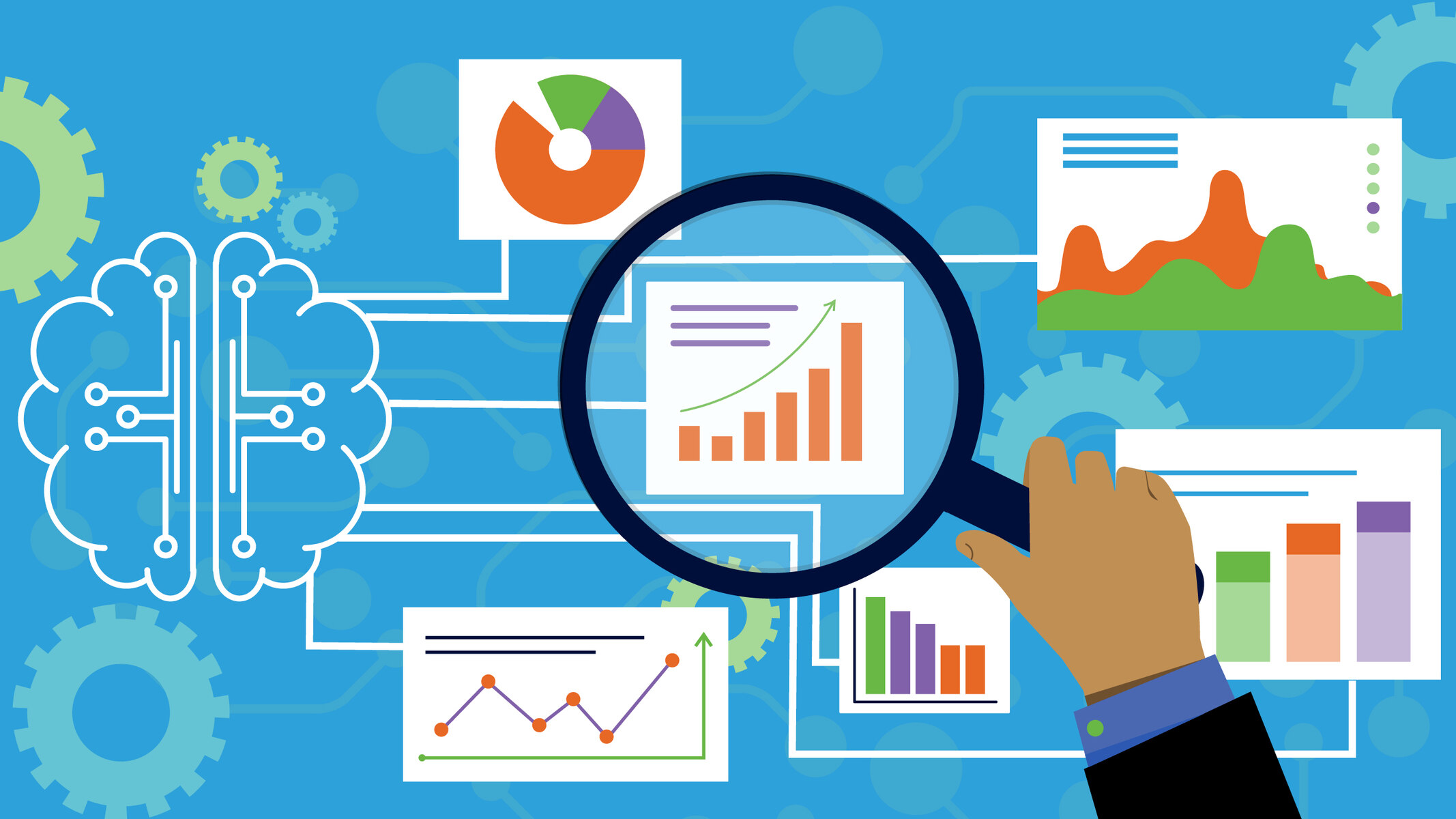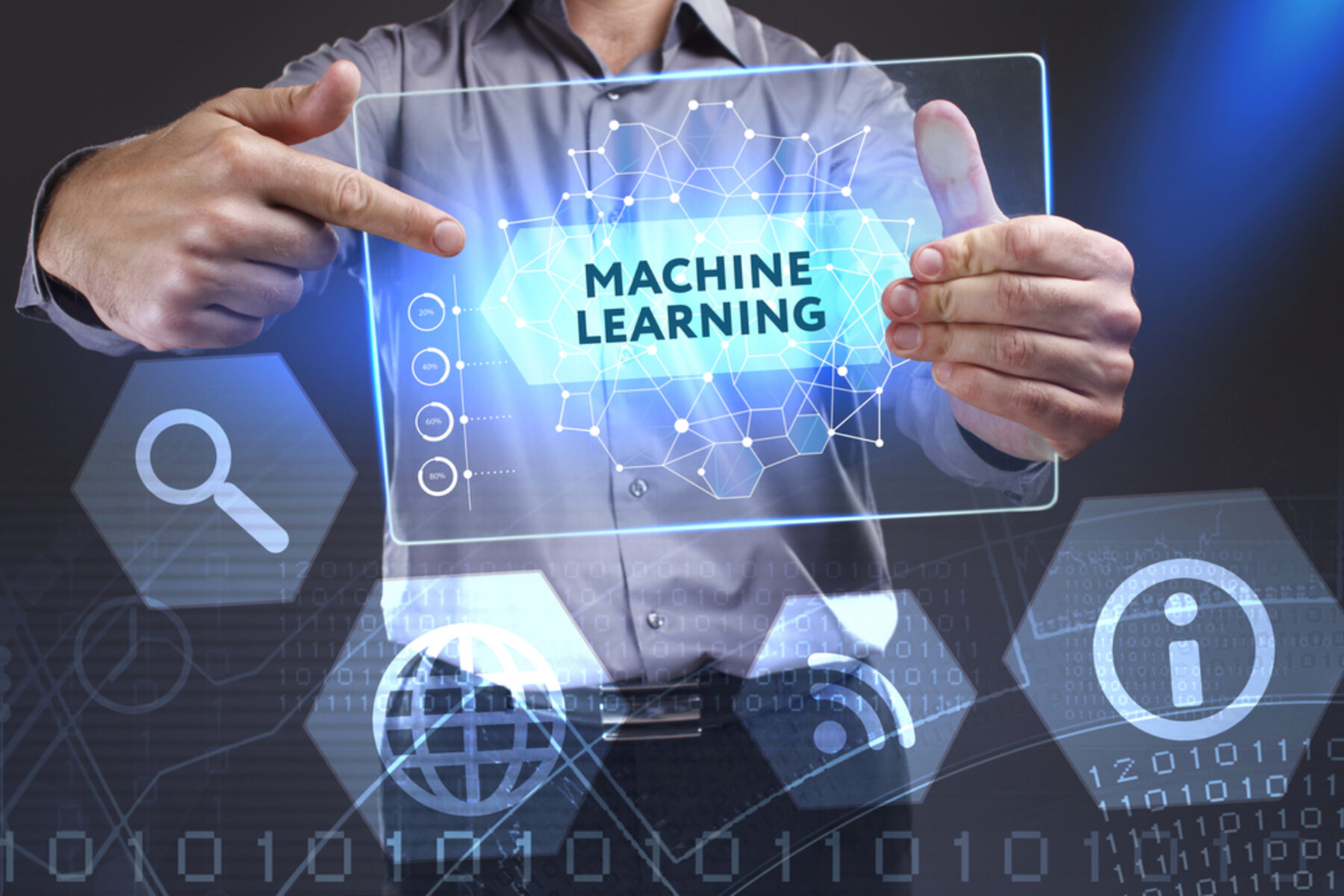Introduction
Welcome to the exciting world of machine learning! In this rapidly evolving field, computers are trained to learn and make predictions or decisions without being explicitly programmed. With the advancements in technology and the exponential growth of data, machine learning has become pervasive in many industries and applications, ranging from healthcare and finance to marketing and self-driving cars.
Machine learning is a subset of artificial intelligence that focuses on enabling machines to process data, learn patterns, and make predictions or decisions based on that learning. It involves the development of algorithms and models that can analyze and interpret data, and then use that knowledge to perform tasks or make accurate predictions. This ability to learn and adapt makes machine learning a powerful tool that has the potential to revolutionize how we live and work.
There are different types of machine learning algorithms, each serving a unique purpose. Supervised learning algorithms use labeled training data to make predictions or classify data. Unsupervised learning algorithms, on the other hand, analyze unlabeled data to discover patterns or group similar data points together. Reinforcement learning algorithms learn through trial and error, receiving rewards or punishments based on their actions.
Machine learning algorithms can be further classified based on the type of problem they solve. Classification algorithms are used when the output variable is categorical. Regression algorithms are used when the output variable is numerical. Clustering algorithms group similar data points together, while neural networks and deep learning algorithms are inspired by the human brain and can solve complex problems.
Natural Language Processing (NLP) is another important aspect of machine learning, which enables computers to understand and process human language. This has led to advancements in voice recognition, sentiment analysis, and machine translation, among others.
To ensure the accuracy and effectiveness of machine learning models, feature engineering plays a vital role. This involves selecting and transforming relevant features from the data to improve the model’s performance.
Model evaluation and metrics are used to assess the performance of machine learning algorithms, to determine their accuracy and reliability. Overfitting and underfitting are common challenges in machine learning, where the model either memorizes the training data or fails to capture its patterns, respectively.
Hyperparameter tuning is the process of fine-tuning the parameters of a machine learning algorithm to optimize its performance. Finally, model deployment involves putting the trained model into production, so it can be used in real-world scenarios.
In this article, we will delve deeper into each of these topics, exploring the various types of machine learning algorithms and their applications. So let’s embark on a journey to unravel the mysteries of machine learning and understand its significance in shaping the future.
What is Machine Learning?
Machine learning is a field of artificial intelligence that focuses on developing algorithms and models that enable computers to learn from data and make predictions or decisions without being explicitly programmed. It involves the study of statistical models and algorithms that enable computers to automatically learn and improve from experience.
The core idea behind machine learning is to allow computers to learn and adapt from data, similar to how humans learn from experience. By exposing the computer to large amounts of data, it can recognize patterns, make connections, and generalize from the information it has observed. This ability to learn and improve over time is what sets machine learning apart from traditional programming.
Machine learning can be categorized into three main types: supervised learning, unsupervised learning, and reinforcement learning. In supervised learning, the model is trained on labeled data, where the inputs and corresponding outputs are provided. The aim is to learn a function that maps the inputs to the correct outputs. This type of learning is commonly used for tasks such as classification, regression, and time series prediction. Common algorithms in supervised learning include decision trees, support vector machines, and random forests.
Unsupervised learning, on the other hand, deals with unlabeled data. The objective is to find patterns and structures in the data without any prior knowledge of the output. Cluster analysis and dimensionality reduction are common applications of unsupervised learning. Clustering algorithms like K-means and hierarchical clustering group similar data points together based on their intrinsic characteristics. Dimensionality reduction techniques like principal component analysis (PCA) and t-SNE reduce the dimensionality of the data while preserving its important features.
Reinforcement learning takes a different approach by training agents to interact with an environment and learn from feedback in the form of rewards and punishments. The agent learns to take actions that maximize its cumulative reward over time. This type of learning is commonly used in areas such as robotics, game playing, and autonomous vehicles.
Machine learning algorithms can be further classified based on the type of problem they solve. Classification algorithms are used when the output variable is categorical, dividing data into predefined classes or categories. Regression algorithms, on the other hand, are used when the output variable is numerical, predicting continuous values. Clustering algorithms group similar data points together, while neural networks and deep learning algorithms are inspired by the human brain and can solve complex problems like image recognition and natural language processing.
In the next sections of this article, we will explore each of these types of machine learning algorithms in more detail, along with their applications and use cases. By understanding the fundamentals of machine learning, we can harness its potential to solve complex problems and drive innovation across various industries.
Supervised Learning
Supervised learning is a type of machine learning where the model is trained on labeled data, meaning the inputs and corresponding outputs are provided. The goal of supervised learning is to learn a function that can accurately predict the output for new, unseen inputs.
In supervised learning, the labeled data is typically split into two sets: a training set and a test set. The training set is used to train the model, while the test set is used to evaluate its performance and generalization ability. The model learns from the training data by adjusting its internal parameters based on the patterns and relationships observed in the input-output pairs.
There are different types of supervised learning tasks, depending on the nature of the output variable. Classification is one such task where the output variable is categorical, dividing the data into predefined classes or categories. For example, classifying emails as spam or non-spam, or classifying images as cats or dogs. The goal is to learn a decision boundary that separates the different classes accurately. Popular algorithms for classification include logistic regression, support vector machines (SVM), and random forests.
Regression is another supervised learning task where the output variable is numerical, predicting continuous values. Regression algorithms aim to learn a function that can accurately predict the output based on the input variables. For example, predicting house prices based on features like square footage, number of bedrooms, and location. Linear regression, decision trees, and neural networks are commonly used regression algorithms.
Time series prediction is another application of supervised learning, where the output variable is a value or a sequence of values over time. This task involves analyzing past data to forecast future values. It is widely used in financial markets, weather forecasting, and stock price prediction. Recurrent neural networks (RNN) and long short-term memory (LSTM) networks are commonly used for time series prediction.
The success of supervised learning algorithms heavily relies on the quality and representativeness of the labeled training data. The training data should adequately capture the patterns and variations present in the real-world problem. It is important to have sufficient and diverse data to prevent overfitting, where the model memorizes the training data and fails to generalize to unseen examples.
Supervised learning has a wide range of applications across various industries. It is used in spam filtering, sentiment analysis, customer churn prediction, credit risk assessment, and many other tasks in business and finance. In healthcare, it can be utilized for disease diagnosis, medical image analysis, and drug discovery. Supervised learning is also crucial in autonomous vehicles, where models are trained to recognize objects and make decisions based on sensor data.
In the next sections, we will explore different supervised learning algorithms in more detail, understand their strengths and weaknesses, and explore their applications in various domains.
Unsupervised Learning
Unsupervised learning is a type of machine learning where the model is trained on unlabeled data, meaning there are no predefined output labels provided. The goal of unsupervised learning is to discover patterns, relationships, and structures in the data without any prior knowledge.
In unsupervised learning, the model analyzes the input data and identifies inherent similarities or groupings. This can be achieved through clustering algorithms, which partition the data into groups based on their similarity or proximity. The aim is to find clusters that are internally similar while being distinct from other clusters. Common clustering algorithms include K-means, hierarchical clustering, and DBSCAN.
Dimensionality reduction is another important application of unsupervised learning. It involves reducing the number of variables or features in a dataset while preserving its important information. This is especially useful when dealing with high-dimensional data, as reducing the dimensionality can improve computational efficiency and prevent overfitting. Popular dimensionality reduction techniques include Principal Component Analysis (PCA) and t-distributed Stochastic Neighbor Embedding (t-SNE).
Unsupervised learning algorithms can also be used for anomaly detection, where the goal is to identify rare or unusual instances in a dataset. By learning the normal patterns present in the data, the model can identify instances that deviate significantly from the norm. This has applications in fraud detection, network security, and manufacturing quality control.
Association rule learning is another technique used in unsupervised learning. It aims to discover interesting relationships or associations between variables in a dataset. This is commonly used in market basket analysis, where the goal is to identify products that are frequently purchased together. This information can be used for targeted marketing or product placement strategies.
Unsupervised learning has wide-ranging applications across various domains. In finance, it can be used for portfolio optimization, anomaly detection in stock market data, or customer segmentation based on transaction history. In biology, it can help identify gene expression patterns, cluster DNA sequences, or analyze protein structures. In natural language processing, unsupervised learning techniques can be used for topic modeling, text clustering, and sentiment analysis.
One advantage of unsupervised learning is its ability to uncover unknown patterns and detect hidden structures in the data. However, a challenge in unsupervised learning is evaluating the quality of the results since there are no predefined output labels to compare against. It requires domain expertise and post-processing analysis to interpret and validate the discovered patterns.
In the next sections, we will delve deeper into different unsupervised learning algorithms, understand how they work, and explore their applications in real-world scenarios.
Reinforcement Learning
Reinforcement learning is a type of machine learning that involves training an agent to interact with an environment and learn through trial and error. The agent receives feedback in the form of rewards or punishments based on its actions, and the goal is to maximize the cumulative reward over time.
In reinforcement learning, an agent takes actions in an environment based on its current state. The environment responds to the actions, providing the agent with a new state and a reward signal. The agent’s objective is to learn a policy, which is a mapping of states to actions, that maximizes the long-term cumulative reward.
The feedback in reinforcement learning is crucial for the agent to learn and improve its decision-making. The rewards can be positive, negative, or zero, indicating the desirability of a particular action in a given state. By interacting with the environment, the agent explores different actions and learns which actions lead to higher rewards and better performance.
One of the key challenges in reinforcement learning is striking a balance between exploration and exploitation. Exploration involves trying out different actions to discover new strategies that may lead to higher rewards. Exploitation involves utilizing the already learned knowledge to take actions that are known to yield higher rewards. The agent needs to find the optimal trade-off between exploration and exploitation to maximize its long-term reward.
Reinforcement learning has been successfully applied in various domains. In robotics, it can be used to teach robots how to navigate a complex environment or manipulate objects. In gaming, reinforcement learning algorithms have achieved impressive results by learning to play games such as Go, chess, and video games without any prior knowledge or human guidance.
Reinforcement learning has also shown promise in autonomous vehicles, where agents learn how to make driving decisions based on sensor inputs and reward signals. It has applications in recommendation systems, where agents learn to recommend personalized content or products to users based on their preferences and feedback. Reinforcement learning is also used in supply chain optimization, resource allocation, and energy management.
Deep reinforcement learning is an area of research that combines reinforcement learning with deep learning techniques. Deep neural networks are used to approximate the value or policy functions, allowing the agent to learn from high-dimensional inputs, such as images or raw sensor data. This has led to significant advancements in the field, enabling agents to learn directly from raw sensory input without the need for handcrafted features.
Reinforcement learning is a dynamic and exciting field with a wide range of potential applications. By enabling machines to learn through trial and error, it has the ability to tackle complex decision-making problems and drive significant advancements in artificial intelligence.
Classification Algorithms
Classification algorithms are a type of supervised learning algorithm used when the output variable is categorical or qualitative. The goal of classification is to assign input data into predefined classes or categories based on their features or characteristics.
There are various classification algorithms available, each with its own strengths and weaknesses. One popular algorithm is Logistic Regression, which models the probability of an input belonging to a particular class using a logistic function. It is commonly used for binary classification tasks and can be extended to handle multi-class problems.
Another widely used algorithm is Decision Trees. Decision trees create a hierarchical structure of nodes where each node represents a decision based on a specific feature. The splits in the tree are determined based on the feature that provides the most information gain to differentiate the classes. Decision trees are straightforward to interpret and can handle both categorical and numerical features.
Support Vector Machines (SVM) are powerful algorithms that find an optimal hyperplane to separate different classes in the input space. SVMs map the input data to a higher-dimensional space to better separate the classes. They are effective for both linearly separable and non-linearly separable data, and can handle large feature spaces.
Random Forests are ensemble learning algorithms that combine multiple decision trees to make predictions. Each decision tree is trained on a different subset of the data, and the final prediction is made by aggregating the predictions of all the trees. Random Forests are robust against overfitting and can handle high-dimensional data with a large number of features.
K-Nearest Neighbors (KNN) is a simple yet effective algorithm that classifies new data points based on the class labels of its k nearest neighbors in the training data. The choice of k determines the flexibility of the algorithm. KNN is non-parametric and can handle multi-class problems.
Naive Bayes algorithm is based on Bayes’ theorem and assumes that the features are conditionally independent given the class label. It calculates the probability of a new data point belonging to each class and assigns it to the class with the highest probability. Naive Bayes is computationally efficient and works well with high-dimensional data.
These are just a few examples of classification algorithms, and there are many more available. The choice of algorithm depends on the nature of the data, the complexity of the problem, and the desired interpretability of the model. It is common to experiment with multiple algorithms and compare their performance using evaluation metrics like accuracy, precision, recall, and F1-score.
Classification algorithms have a wide range of applications across various domains. They are used for sentiment analysis in natural language processing, email spam filtering, disease diagnosis in healthcare, credit risk assessment in finance, and image recognition, among many others.
In the next sections of this article, we will explore different classification algorithms in more detail, understand their working principles, and discuss their applications in real-world scenarios.
Regression Algorithms
Regression algorithms are a type of supervised learning algorithm used when the output variable is numerical or quantitative. The goal of regression is to predict a continuous value based on the input features.
There are several regression algorithms available, each with its own advantages and applicability to different types of problems. One commonly used algorithm is Linear Regression, which fits a linear equation to the data by minimizing the sum of the squared differences between the observed and predicted values. Linear Regression is simple, interpretable, and works well when the relationship between the input and output variables is linear.
Decision Trees can also be used for regression tasks by predicting the average value of the target variable within each leaf node. Decision Trees can capture non-linear relationships and interactions between variables, and handle both continuous and categorical features. However, they are prone to overfitting and may not generalize well to unseen data.
Support Vector Regression (SVR) is a regression algorithm that extends Support Vector Machines to handle continuous target variables. SVR aims to find an optimal hyperplane that maximizes the margin while containing as many training data points as possible. It can handle non-linear relationships by using kernel functions to transform the input space.
Random Forests can be used for regression tasks by aggregating the predictions of multiple decision trees. Each decision tree predicts the value of the target variable, and the final prediction is made by averaging or taking the majority vote of all the tree predictions. Random Forests are robust against overfitting and can handle high-dimensional data.
Gradient Boosting Regression is an ensemble method that combines multiple weak regression models to create a strong predictive model. It works by iteratively adding models to correct the errors made by the previous models. Gradient Boosting Regression algorithms, such as XGBoost and LightGBM, have gained popularity due to their high performance and ability to handle complex relationships in the data.
Neural Networks can also be used for regression tasks. Deep learning models with multiple layers of interconnected nodes can capture complex non-linear relationships and make accurate predictions. Convolutional Neural Networks (CNN) are effective for analyzing spatial data, while Recurrent Neural Networks (RNN) are suitable for sequential data, such as time series.
These are just a few examples of regression algorithms, and there are many others available. The choice of algorithm depends on the nature of the data, the complexity of the problem, and the desired interpretability of the model. It is common to experiment with multiple algorithms and compare their performance using evaluation metrics like mean squared error, mean absolute error, and R-squared.
Regression algorithms have a wide range of applications. They are used for predicting stock prices, forecasting sales, estimating housing prices, trend analysis, demand forecasting, and many other quantitative prediction tasks. In the next sections of this article, we will explore different regression algorithms in more detail, understand their working principles, and discuss their applications in real-world scenarios.
Clustering Algorithms
Clustering algorithms are a type of unsupervised learning algorithm used to discover patterns or group similar data points together based on their intrinsic characteristics. The goal of clustering is to identify clusters or clusters in the data, where data points within the same cluster are more similar to each other compared to those in other clusters.
There are various clustering algorithms available, each with its own characteristics and assumptions. One commonly used algorithm is K-means, which partitions the data into k distinct clusters. It works by iteratively assigning each data point to the cluster with the nearest centroid and updating the centroid based on the new data assignments. K-means is computationally efficient and works well with large datasets.
Hierarchical clustering is another popular algorithm that creates a hierarchy of nested clusters. It can be agglomerative, where each data point initially belongs to its own cluster and then clusters are successively merged, or divisive, where the process starts with one cluster that contains all the data points and is successively split. Hierarchical clustering produces a dendrogram that visually represents the clustering structure.
DBSCAN (Density-Based Spatial Clustering of Applications with Noise) is a density-based clustering algorithm that groups together data points that are close to each other in terms of density. It defines clusters as dense regions separated by sparser regions of data. DBSCAN is capable of handling clusters of arbitrary shapes and can identify noise or outliers in the data by labeling them as not belonging to any cluster.
Clustering algorithms like Mean Shift and Affinity Propagation determine cluster centers or exemplars by iteratively updating the similarity or density measures between data points. Mean Shift identifies modes or local maxima of the data distribution and moves the cluster centers towards higher density regions. Affinity Propagation uses message passing among data points to propagate similarity information and identify exemplars that best represent the data clusters.
Clustering algorithms are commonly used in data exploration, customer segmentation, image analysis, anomaly detection, and recommendation systems. They help uncover hidden structures and patterns in the data, identify groups with similar characteristics, and provide insights for decision-making and targeted actions.
However, evaluating the quality of clustering results can be challenging since there are no predefined labels or ground truth. Internal evaluation metrics such as silhouette score or calinski_harabasz score can be used to assess the compactness and separation of the clusters. External evaluation metrics, such as adjusted Rand index or Fowlkes-Mallows index, can be used if some ground truth labels are available.
It’s important to note that the choice of clustering algorithm depends on the nature of the data, the desired number of clusters, and the shape of the clusters. It is common to experiment with multiple clustering algorithms and compare their performance and interpretability.
In the next sections of this article, we will explore different clustering algorithms in more detail, understand their working principles, and discuss their applications in various domains.
Neural Networks and Deep Learning
Neural networks and deep learning are a subset of machine learning algorithms inspired by the structure and functioning of the human brain. They have gained significant attention and success in recent years due to their ability to solve complex problems and learn from large amounts of data.
A neural network is a collection of interconnected nodes, called artificial neurons or perceptrons. These neurons are organized into layers – an input layer, one or more hidden layers, and an output layer. Each neuron receives input signals, applies a mathematical operation, and produces an output signal that is passed to the next layer.
Deep learning refers to neural networks with multiple hidden layers. These deep neural networks are capable of learning hierarchical representations of data, extracting complex features, and making sophisticated predictions. The depth of the network allows it to learn intricate patterns and relationships in the data.
One of the key advancements in deep learning is the development of Convolutional Neural Networks (CNN). CNNs have revolutionized the field of computer vision and image recognition. They are designed to efficiently process grid-like data, such as images, by applying convolutional and pooling operations. CNNs can automatically learn and extract relevant features from the data, making them highly effective in tasks like object detection and image classification.
Recurrent Neural Networks (RNN) are another type of neural network used for sequential data, such as time series or natural language processing. RNNs have feedback connections that allow information to persist across different time steps. This makes them well-suited for tasks like language modeling, speech recognition, and machine translation.
Long Short-Term Memory (LSTM) networks are a variant of RNNs that can capture long-term dependencies and handle the vanishing gradient problem. LSTMs have memory cells and gate mechanisms that control the flow of information over time. They are widely used in tasks that require modeling sequences or handling time-dependent data.
Deep learning models are trained using large amounts of labeled data and backpropagation, a learning algorithm that adjusts the model’s weights and biases to minimize the error between the predicted output and the true output. This process involves forward propagation, where data flows through the network to generate predictions, and backward propagation, where gradients are computed and used to update the model’s parameters.
Deep learning has achieved remarkable results in various domains. It has been successful in speech recognition, natural language processing, computer vision, and recommendation systems. Deep learning models have achieved human-level performance in tasks such as image classification, object detection, and machine translation. They have been applied in autonomous vehicles, medical imaging, fraud detection, and many other fields.
However, deep learning models require large amounts of labeled data and significant computational resources for training. The training process can be time-consuming and computationally intensive. Model interpretation and explainability can also be challenging due to the black box nature of deep neural networks.
In the next sections of this article, we will explore different types of deep learning neural networks, understand their architectures, training techniques, and dive deeper into their applications in real-world scenarios.
Natural Language Processing
Natural Language Processing (NLP) is a field of study that focuses on enabling computers to understand, interpret, and generate human language. It combines elements of linguistics, computer science, and artificial intelligence to process, analyze, and derive meaning from text or speech data.
NLP plays a crucial role in many applications and services that involve human-computer interactions. It enables machines to understand and respond to natural language queries, automate language-based tasks, and extract valuable insights from text data.
One of the key challenges in NLP is textual understanding. Machines need to be able to comprehend the meaning, context, and nuances of human language. This involves tasks such as part-of-speech tagging, named entity recognition, and syntactic parsing. Part-of-speech tagging assigns grammatical tags to words in a sentence, such as noun, verb, or adjective. Named entity recognition identifies and classifies named entities like person names, organizations, or locations. Syntactic parsing involves analyzing the grammatical structure of a sentence.
Sentiment analysis is another important task in NLP, where machines are trained to determine the sentiment or subjective information in a piece of text. Sentiment analysis can be used to gauge public opinion, analyze customer feedback, or monitor social media sentiment towards a brand or product.
Text classification is a common application of NLP that involves assigning labels or categories to textual data. This can be used for tasks such as spam detection, topic classification, sentiment analysis, or language identification. Machine learning algorithms, such as Naive Bayes, Support Vector Machines, and deep learning models, are often used for text classification.
Machine translation is another significant area of NLP that focuses on automatically translating text from one language to another. Statistical models and neural machine translation models, such as sequence-to-sequence models, have been developed to improve translation accuracy and fluency.
Information retrieval, text summarization, question answering, and natural language generation are other important applications of NLP. Information retrieval involves retrieving relevant documents or information based on user queries. Text summarization aims to extract the key information from a text and generate a concise summary. Question answering systems provide answers to user queries using relevant information from text sources. Natural language generation involves creating human-like text or speech from structured data or specific instructions.
NLP techniques have been used extensively in content analysis, social media monitoring, customer support chatbots, virtual assistants, and automated document processing. They have also found applications in healthcare, legal document analysis, sentiment analysis in financial markets, and machine-generated news articles.
Advancements in deep learning models, such as Recurrent Neural Networks (RNN), Long Short-Term Memory (LSTM), and Transformers, have significantly improved the performance of NLP tasks. Pre-trained language models like BERT, GPT, and T5 have achieved state-of-the-art results in various NLP benchmarks and tasks.
In the next sections of this article, we will explore different NLP techniques, algorithms, and models in more detail, understand their working principles, and delve into their applications in real-world scenarios.
Feature Engineering
Feature engineering is a critical step in machine learning that involves selecting, transforming, and creating relevant features from the raw data to improve the performance of a model. It is a process of converting data into a suitable representation that captures the underlying patterns and relationships.
The success of a machine learning model heavily relies on the quality, relevance, and informative nature of the features used as inputs. Good feature engineering can significantly enhance the model’s predictive power and generalization ability.
Feature engineering begins with a thorough understanding of the data and the problem at hand. It involves exploring the data, gaining domain knowledge, and identifying the appropriate features that are likely to be predictive of the target variable. This can involve analyzing the statistical properties of the data, understanding the relationships between variables, and considering any domain-specific insights.
There are various techniques for feature engineering, depending on the type of data and the problem domain. Some common techniques include:
1. Encoding Categorical Variables: Categorical variables need to be encoded into numerical representations for the model to understand them. This can be done through techniques such as one-hot encoding, label encoding, or target encoding.
2. Handling Missing Data: Missing data can have a significant impact on model performance. Various techniques can be used to handle missing values, such as imputation (replacing missing values with estimates based on other observations) or creating a separate indicator variable to denote missing values.
3. Scaling and Normalization: Scaling numerical features to a common range, such as [0, 1] or with zero mean and unit variance, can prevent variables with larger magnitudes from dominating the model’s learning process.
4. Feature Selection: Not all features may be relevant for the task at hand. Feature selection techniques, such as forward selection, backward elimination, or L1 regularization, can be used to select the most informative and independent features that contribute to the model’s predictive power.
5. Creating Interaction or Polynomial Terms: Introducing interaction terms or polynomial features can help the model capture non-linear relationships or interactions between variables. This can be achieved by combining variables, multiplying or squaring them, or using techniques like polynomial regression.
6. Dimensionality Reduction: High-dimensional data can lead to increased model complexity and overfitting. Dimensionality reduction techniques, such as Principal Component Analysis (PCA) or t-Distributed Stochastic Neighbor Embedding (t-SNE), can be used to reduce the dimensionality of the data while preserving its important features.
Feature engineering is an iterative process that involves experimentation, domain knowledge, and creativity. It requires a deep understanding of the data and problem context to extract meaningful features that capture the underlying patterns and improve the model’s performance. Proper feature engineering can help mitigate issues such as overfitting, improve the model’s interpretability, and enable the model to generalize well to unseen data.
In the next sections, we will explore different feature engineering techniques in more detail, understand their applications, and learn how to leverage them to enhance machine learning models.
Model Evaluation and Metrics
Model evaluation is an essential step in machine learning that assesses the performance and effectiveness of a trained model. It involves measuring how well the model generalizes to unseen data and how accurately it makes predictions or classifications.
There are several evaluation metrics that are commonly used to measure the performance of machine learning models. The choice of metric depends on the problem type, the nature of the data, and the specific goals of the project.
For classification tasks, common evaluation metrics include:
1. Accuracy: The proportion of correctly classified instances out of the total number of instances in the dataset. Accuracy provides a general measure of overall performance but may not be suitable when the classes are imbalanced.
2. Precision: The proportion of correctly predicted positive instances out of all instances predicted as positive. Precision is highly useful when the cost of false positives is high.
3. Recall: The proportion of correctly predicted positive instances out of all actual positive instances. Recall is particularly important when the cost of false negatives is high.
4. F1-Score: The harmonic mean of precision and recall, providing a balanced measure that considers both precision and recall. It is often used when the classes are imbalanced and the goal is to achieve a trade-off between precision and recall.
For regression tasks, common evaluation metrics include:
1. Mean Squared Error (MSE): The average of the squared differences between the predicted and actual values. MSE gives higher weight to larger errors, penalizing large deviations from the true values.
2. Mean Absolute Error (MAE): The average of the absolute differences between the predicted and actual values. MAE treats all errors equally and is more robust to outliers.
3. R-squared (R²): A statistical measure of how well the regression model fits the data, indicating the proportion of the variance in the dependent variable that is predictable from the independent variables.
5. Root Mean Squared Error (RMSE): The square root of the average of the squared differences between the predicted and actual values. RMSE has the advantage of being in the same unit as the dependent variable, making it interpretable.
It is important to note that evaluation metrics alone may not provide a complete picture of a model’s performance. Other factors to consider include the specific requirements of the problem, the business context, and any constraints or trade-offs involved.
In addition to evaluation metrics, it is crucial to use appropriate evaluation techniques such as cross-validation to get a reliable estimate of the model’s performance. Cross-validation involves splitting the available data into multiple subsets, training and evaluating the model on different combinations of these subsets to gain a more robust understanding of its performance across different data samples.
In the next sections, we will dive deeper into different evaluation metrics, explore techniques for model evaluation and selection, and discuss best practices for assessing the performance of machine learning models.
Overfitting and Underfitting
Overfitting and underfitting are common challenges in machine learning that affect the performance and generalization ability of models. They occur when the model fails to properly capture the underlying patterns and relationships in the data.
Overfitting happens when a model becomes too complex and learns the noise and random fluctuations in the training data, rather than the true underlying patterns. This leads to high variance, where the model fits the training data extremely well but fails to generalize to new, unseen data. Overfitting can occur when the model is too complex or when it’s trained with insufficient data.
On the other hand, underfitting occurs when a model is too simple and fails to capture the underlying patterns in the data. It results in high bias, where the model is unable to learn the training data well and also performs poorly on new data. Underfitting can occur when the model is too simple to represent the complexity of the problem or when it’s trained with insufficient features or training data.
To address overfitting and underfitting, various techniques can be employed:
1. Cross-validation: Using cross-validation helps in estimating the model’s performance on unseen data and can provide insights into its generalization ability. This technique helps identify whether a model is overfitting or underfitting by assessing its performance on multiple subsets of the data.
2. Regularization: Regularization techniques, such as L1 and L2 regularization, add a penalty term to the model’s objective function, discouraging overly complex parameter values and reducing overfitting. Regularization helps in controlling the model’s complexity and avoids excessive reliance on certain features.
3. Feature Selection: Selecting the most relevant and informative features can help combat overfitting, especially when dealing with high-dimensional data. By focusing on the most influential features, the model can avoid being influenced by noisy or irrelevant features.
4. Data Augmentation: Increasing the amount of training data through techniques like data augmentation can help reduce overfitting. This involves creating new training examples by applying transformations or introducing small variations to the existing data.
5. Early Stopping: Monitoring the model’s performance on a validation set during training and stopping the training process early when the model’s performance starts to degrade can prevent overfitting. This helps find the point at which the model achieves the best trade-off between bias and variance.
6. Ensemble Methods: Building an ensemble of models, such as Random Forests or Gradient Boosting, can help mitigate overfitting and improve the model’s generalization. Ensemble methods combine multiple individual models to make predictions, reducing the risk of overfitting by leveraging the wisdom of the crowd.
It’s important to find the right balance between model complexity and generalization. This requires understanding the problem domain, having sufficient data, and carefully selecting relevant features. By mitigating overfitting and underfitting, models can perform well on both the training data and new, unseen data, ensuring their effectiveness in real-world applications.
In the next sections, we will delve deeper into techniques for addressing overfitting and underfitting, explore regularization methods, and discuss strategies for improving model generalization and performance.
Hyperparameter Tuning
Hyperparameter tuning is a crucial step in machine learning that involves selecting the optimal values for the hyperparameters of a model. Hyperparameters are parameters that are set before the training process and cannot be learned from the data. They control the behavior and performance of the model.
The choice of hyperparameters significantly impacts the model’s performance, generalization ability, and computational efficiency. It is essential to experiment with different combinations of hyperparameters to find the optimal configuration that yields the best results.
Hyperparameter tuning can be done through various techniques:
1. Grid Search: Grid search involves specifying a grid of hyperparameter values to explore. The model is trained and evaluated using all possible combinations of the hyperparameter values, and the best configuration is selected based on a chosen evaluation metric.
2. Random Search: Random search involves selecting random combinations of hyperparameter values from a predefined search space. This method is useful when the number of hyperparameters or their potential value ranges are large, as it allows for efficient exploration of different regions of the search space.
3. Bayesian Optimization: Bayesian optimization is a sophisticated method that uses probabilistic models to select the most promising hyperparameters to explore. It builds a surrogate model of the underlying objective function and uses an acquisition function to determine which hyperparameter configuration to evaluate next, based on the model’s predictions.
4. Automated Hyperparameter Tuning Libraries: Several libraries like scikit-learn’s GridSearchCV, RandomizedSearchCV, or Optuna provide automated tools for hyperparameter tuning. These libraries handle the search process, model training, and performance evaluation, simplifying the workflow and making hyperparameter tuning more accessible.
5. Manual Search: In some cases, domain knowledge and experience might guide the hyperparameter tuning process. Manual search involves iteratively adjusting the hyperparameters based on insights gained from analyzing the model’s performance and behavior on the dataset. It can be time-consuming, but it allows for more fine-grained control over the hyperparameter selection process.
During hyperparameter tuning, it’s important to strike a balance between underfitting and overfitting. Models with too many or too few hyperparameter variations may result in poor performance or overly specific models that do not generalize well.
Cross-validation is often used during hyperparameter tuning to estimate the model’s performance for each hyperparameter configuration. This helps ensure that the selected hyperparameters generalize well to unseen data.
Hyperparameter tuning is an iterative process that requires multiple rounds of experimentation and evaluation. It is common to perform several iterations to refine the hyperparameters and achieve the desired balance between model complexity, performance, and generalization ability.
In the next sections, we will explore different hyperparameters for various machine learning algorithms, discuss techniques for efficient hyperparameter tuning, and provide insights on best practices for finding the optimal hyperparameter configuration.
Model Deployment
Model deployment is the process of putting a trained machine learning model into production, making it available for use in real-world applications. It involves taking the model from a development environment and integrating it into a production environment where it can be utilized to make predictions or decisions.
Model deployment typically involves several steps:
1. Preparation: Before deploying the model, it is essential to ensure that it is ready for production use. This includes finalizing the data preprocessing steps, handling missing values, encoding categorical variables, and any other required data transformations.
2. Integration: The deployed model needs to be integrated with the existing software infrastructure or application. This may involve setting up APIs, building a user interface, or creating service endpoints to receive data and return predictions.
3. Scalability: The deployed model should be able to handle the expected level of usage, both in terms of data volume and response time. It is important to consider how the model performs under different loads and to ensure that it can scale effectively as the user base or data volume increases.
4. Monitoring: Continuous monitoring of the deployed model is crucial to detect any issues, such as data drift or model degradation over time. Monitoring can involve tracking performance metrics, updating the model periodically, and setting up alerts or automated processes to address any emerging issues.
5. Versioning and Maintenance: Models evolve over time, and it is important to maintain a record of different versions. This enables easy rollback to previous versions if necessary and facilitates iterative improvements or updates to the model in the future.
6. Testing and Validation: Thorough testing is crucial before deploying the model. This includes validating the model’s performance on a separate test set or using a controlled rollout strategy to ensure that it behaves as expected in the production environment. Testing also involves conducting various scenarios and edge case assessments to identify potential issues or biases.
7. Security and Privacy: Considerations should be taken to ensure the security and privacy of the model, data, and user information. This may involve implementing authentication mechanisms, data encryption, and complying with relevant privacy regulations like GDPR or HIPAA.
Once the model is successfully deployed, it can be used by end-users or incorporated into automated systems for decision-making, predictions, or recommendations. Regular updates and maintenance should be performed to keep the model accurate and up-to-date.
Model deployment is a critical step in realizing the value of a machine learning model. Effective deployment ensures that the model can be seamlessly integrated into real-world applications, providing actionable insights and driving business value.
In the next sections, we will explore best practices for model deployment, discuss different deployment strategies, and provide insights on monitoring, versioning, and maintaining deployed models.
Conclusion
In this article, we have explored various aspects of machine learning, from understanding the fundamentals to diving into specific algorithms and techniques. We have covered topics like supervised learning, unsupervised learning, reinforcement learning, as well as classification, regression, and clustering algorithms.
We delved into neural networks and deep learning, highlighting their power in solving complex problems and their applications in computer vision, natural language processing, and more. We also discussed the importance of feature engineering in capturing relevant information from the data and emphasized the significance of model evaluation and metrics in assessing the performance of machine learning models.
Furthermore, we explored the challenges of overfitting and underfitting, as well as techniques to address them. We discussed hyperparameter tuning to find the optimal configuration for models and shared insights on the deployment of machine learning models in real-world scenarios.
Machine learning continues to evolve at a rapid pace, presenting exciting opportunities and challenges. As data and computing power increase, new algorithms and techniques emerge, enabling us to solve more complex problems and explore uncharted territories. Continuous learning, exploration, and adaptation are essential for staying up-to-date in this ever-changing landscape.
We hope that this article has provided you with valuable insights into the world of machine learning and has equipped you with knowledge and strategies to develop and deploy effective machine learning models. Remember, the path to successful machine learning lies in continuous experimentation, learning from failures, and leveraging the power of data.
So, embrace the possibilities, unlock the potential of machine learning, and use it to drive innovation and make a positive impact in your domain of expertise!

























